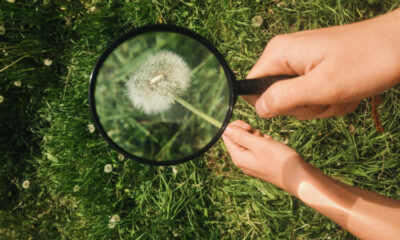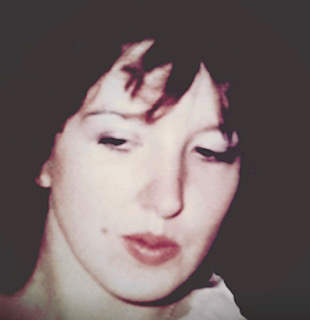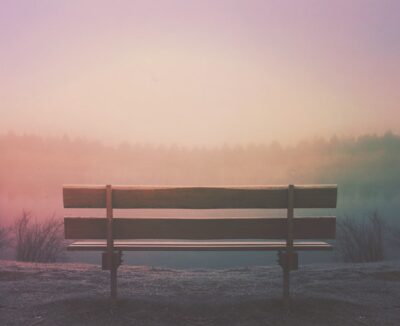 Have you ever gotten into bed at the end of the day and realised that you haven’t spoken out loud to anyone since the day before? Or simply found yourself feeling completely and utterly alone?
Have you ever gotten into bed at the end of the day and realised that you haven’t spoken out loud to anyone since the day before? Or simply found yourself feeling completely and utterly alone?
We live in a hyper-connected world, and yet we’re lonelier than ever before, a situation that is certainly not helped by the COVID lockdown. We have more social media followers than real-life friends, and it’s easier to swap digital messages with strangers on the other side of the planet than it is to sit down for a chat with an actual person – especially now that we’re social distancing and putting ourselves in isolation.
Despite being traditionally viewed as an affliction that’s limited to the elderly, it’s now 16-24 year olds who make up the loneliest age group of all, a finding confirmed in the UK’s largest study on the subject, The Loneliness Experiment by BBC Radio 4. The study included over 55,000 people and found that 34% of 25-34 year olds are lonely ‘often or very often’ while 36% of 34-44 year olds felt the same.
Now, scientists are warning of the damaging effects of a ‘loneliness epidemic’, with loneliness even being equated to the health equivalent of smoking 15 cigarettes a day.
As many of us will know, we don’t need to be physically alone to feel lonely. A toxic friendship or relationship can be incredibly isolating, for example, while spending too much time with people we don’t feel close to can have damaging effects on our psyche, even if we’re only interacting with them through our phones. Loneliness affects people in different ways, and for this reason there are four distinct types of loneliness identified by psychologists: emotional, social, situational and chronic.
But how do we know what type of loneliness we’re experiencing and, more importantly, how can we tackle it? Here, Stylist talks to registered psychologist Dr. Becky Spelman, and hears from women who have experienced loneliness – and managed to keep it at bay.
Emotional Loneliness
 “Those who are emotionally lonely will find it difficult to improve things without tackling the root of the problem,” says Dr. Spelman. “Emotional loneliness is not circumstantial but, rather, comes from within.”
“Those who are emotionally lonely will find it difficult to improve things without tackling the root of the problem,” says Dr. Spelman. “Emotional loneliness is not circumstantial but, rather, comes from within.”
Dr. Spelman recommends therapy to help tackle the root cause of these feelings of emotional loneliness. “Working with a therapist, possibly with a technique such as behavioural cognitive therapy, or attending group therapy, is likely to lead to the best possible outcome,” she says.
“The person in question can start to understand why they are lonely, how their background and experiences have contributed to behaviours that make things worse, and how they can develop a new, and more useful, set of behaviours.”
Situational Loneliness
Many Millennials choose to work abroad for a few years in their 20s and 30s, and the rise in solo travel means a great number of us are planning to jet off on solo adventures once the coronavirus pandemic has passed.
While these plans are undoubtedly exciting, it can also be a period of adjustment as we try to make new friends while simultaneously getting to grips with a new culture and way of life — potentially leading to situational loneliness, says Dr. Spelman.
“Situational loneliness can result from being in circumstances that make developing friendships difficult,” she says. “Examples include those living abroad, perhaps in a place where they do not speak the language perfectly, stay-at-home mothers (or fathers) with young children, or those with a physical or intellectual disability that makes it difficult to get out and about.”
Situational loneliness is something that digital writer Susan experienced when she moved to Dubai for two and a half years in 2013.
“When I first moved to the Middle East, I was completely alone,” she says. “I didn’t have a friend or a family member I could call when the going got tough, or even just someone to have a cup of tea with. It was my choice to move there for work. And it was my choice to move there as a single woman. But that doesn’t mean it was easy.
“The first month was particularly difficult as I spent two weeks in a hotel on my own, surrounded by a completely different culture, customs and language. I felt the sting of loneliness as I dined on my own every evening and looked for a flat share — going from one viewing to the next without understanding a word of Arabic. But after I found somewhere to call home, I made friends with my housemates by putting myself out there and never turning down an invitation to do something new. Thankfully, I pushed myself to get to know them and my new country of residence, too.”
 But situational loneliness doesn’t just arise in those who relocate alone, as social media editor Sarah discovered when she moved countries with her partner. Sarah left her Sydney home in March 2017 to join her partner in London, where he had arrived a month earlier to start a new job and find the pair a home to live in — although she admits that “didn’t mean it was smooth sailing”.
But situational loneliness doesn’t just arise in those who relocate alone, as social media editor Sarah discovered when she moved countries with her partner. Sarah left her Sydney home in March 2017 to join her partner in London, where he had arrived a month earlier to start a new job and find the pair a home to live in — although she admits that “didn’t mean it was smooth sailing”.
“On my first night an emotional (jetlagged) me fell asleep whimpering into my partner’s shoulder, ‘I had to give up a lot to be here’. Although very dramatic, I was more right than wrong. I knew making friends as an adult, outside of freshers’ week or a friend-of-a-friend introduction, would be preceded by a stint of loneliness – something I dreaded.
“The reality of that fear set in a week later. Without a job, I had less interaction with people and felt starved of company. I took to being overly chatty to baristas and the person on the till at Sainsbury’s. Each day I would surf LinkedIn and talk about the weather with anyone mildly inclined to respond. I would look forward to my partner coming home after work for the sheer joy of talking to someone who knew me beyond what groceries I was buying that day.”
Sarah did make friends in the city but she is also aware that “having a partner at home slowed my efforts”.
“There would be times I would crave going out with a friend rather than my partner. But the reality was that in those initial weeks he was my only friend in London. And that made me feel tied to him in a way that we never were in our hometown of Sydney.
“It did take a considerable amount of effort to form friendships outside of his friendship circle (formed from his middle-school years in south London). Eighteen months on, I keep working on those friendships outside of my relationship – because I now know how very valuable they are.”
Pushing yourself to make new friends – and crucially, maintain those friendships – is exactly what Dr. Spelman recommends for someone who is grappling with situational loneliness. And while we can’t currently make an active effort to meet new people in person due to coronavirus, there are alternative solutions.
“The best approach here is a proactive one,” she says. Once we are out of lockdown and able to socialise in person again, she suggests “joining a language class or a hobby group or getting in touch with like-minded people and actively courting friendships, to help overcome loneliness in these circumstances.
“The internet can help. While socialising online is not the same as meeting up with friends for coffee or a drink, establishing a support network online can help to maintain a sense of being liked and wanted, and keep social skills alive.”
Social Loneliness
“Social loneliness is typically experienced by those who have problems in social situations because of shyness, social awkwardness, or a sense of low self-esteem that makes them doubt their capacity to be competent and entertaining in social circumstances,” Dr. Spelman explains.
“Different approaches can help. For example, if the root issue is one of low self-esteem, tackling this first should make a positive difference. Trying a structured approach to socialising, such as joining an online or virtual group that gets together to discuss or engage in a particular hobby, can be a good way to start to end a vicious circle.”
Chronic Loneliness
“Chronic loneliness is the term used to describe those who have been lonely for so long that it has become a way of life to them,” explains Dr. Spelman. “If solitude has become part of their nature, it can be tricky to break the cycle.”
Chronic loneliness is something that Lyla, now 26, experienced when she moved to London to start university at the age of 18. Lyla had previously lived in Nottingham where she had a solid group of friends who all lived nearby, and spent a lot of time together. Moving to a new city triggered feelings of loneliness for her, which became entrenched over her first two and a half years in the city.
 “It was a really bewildering, lonely time,” she says. “The jump of being plonked into a huge arts school, in just one of hundreds of halls of residence in a sprawling city I didn’t understand, made me retreat into myself and I struggled to make friends in the face of it all.
“It was a really bewildering, lonely time,” she says. “The jump of being plonked into a huge arts school, in just one of hundreds of halls of residence in a sprawling city I didn’t understand, made me retreat into myself and I struggled to make friends in the face of it all.
“I spent a lot of time in my tiny room making my mum talk to me for hours and hours on the phone, while I slowly found my footing and met people I connected with. It took me about two and a half years to learn not to hate London, but sticking it out meant it slowly got better, and nine years later nowhere has ever felt more like home.”
Dr. Spelman notes that chronic loneliness is often a by-product of circumstance, such as self-isolation, although unlike situational loneliness, it can go on for so long that it almost becomes a way of life.
“Examples include the elderly whose friends have largely passed away or moved into nursing care, while adult children live far away, or those who are inhibited from socialising by a controlling partner or other circumstances that feel out of their control,” she says. “It is important to remember that we all deserve friends and a social life and that there is nothing wrong with asking for help or making the first step.”
About the Author:
Sarah Biddlecombe is an award-winning journalist and Digital Commissioning Editor at Stylist.
Original article here


 It’s probably been a long time since you lay on your back in the grass, looked up and wondered, Why is the sky blue? Or since you took the time to consider a question as difficult as, Where does the universe begin, and where does it end?
It’s probably been a long time since you lay on your back in the grass, looked up and wondered, Why is the sky blue? Or since you took the time to consider a question as difficult as, Where does the universe begin, and where does it end?










 “I don’t like resting,” I tell her. “I get listless and sad and feel a failure.” She is not surprised. “For some people, rest is almost uncomfortable. It’s almost as if their psyche fights back against it because of the new sensation.” She would never, she says, recommend a three-day silent retreat to a completely frazzled patient. “For someone who is actively burned out, that’s almost traumatic.”
“I don’t like resting,” I tell her. “I get listless and sad and feel a failure.” She is not surprised. “For some people, rest is almost uncomfortable. It’s almost as if their psyche fights back against it because of the new sensation.” She would never, she says, recommend a three-day silent retreat to a completely frazzled patient. “For someone who is actively burned out, that’s almost traumatic.”
 This is no surprise to Dalton-Smith. Analysing data from her quiz during the pandemic, she saw “a huge uptick in the number of people who were experiencing sensory rest deficits”. People confined to the house with small children in particular, she says, were exposed to constant noise and even some adults “irritated each other to death. That non-stop hum of somebody talking in the background causes you to get agitated. That’s what sensory overload does to us.”
This is no surprise to Dalton-Smith. Analysing data from her quiz during the pandemic, she saw “a huge uptick in the number of people who were experiencing sensory rest deficits”. People confined to the house with small children in particular, she says, were exposed to constant noise and even some adults “irritated each other to death. That non-stop hum of somebody talking in the background causes you to get agitated. That’s what sensory overload does to us.”